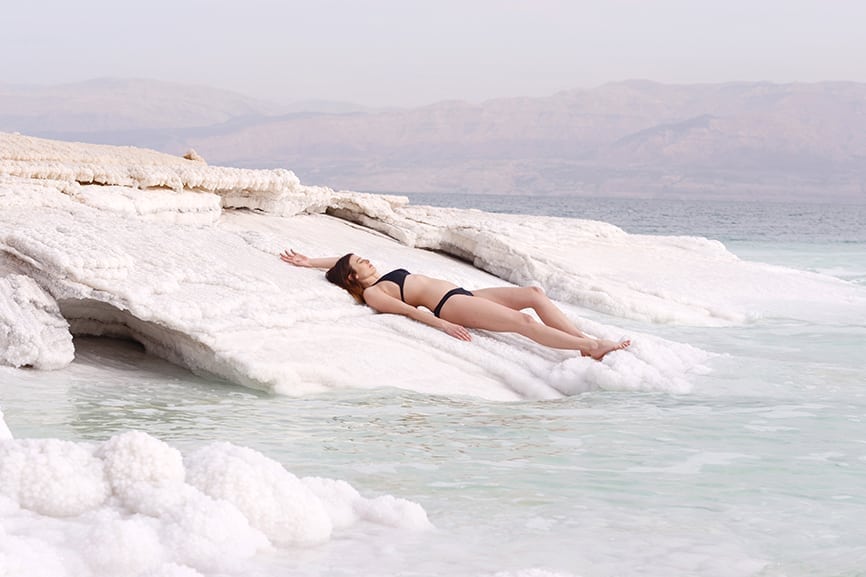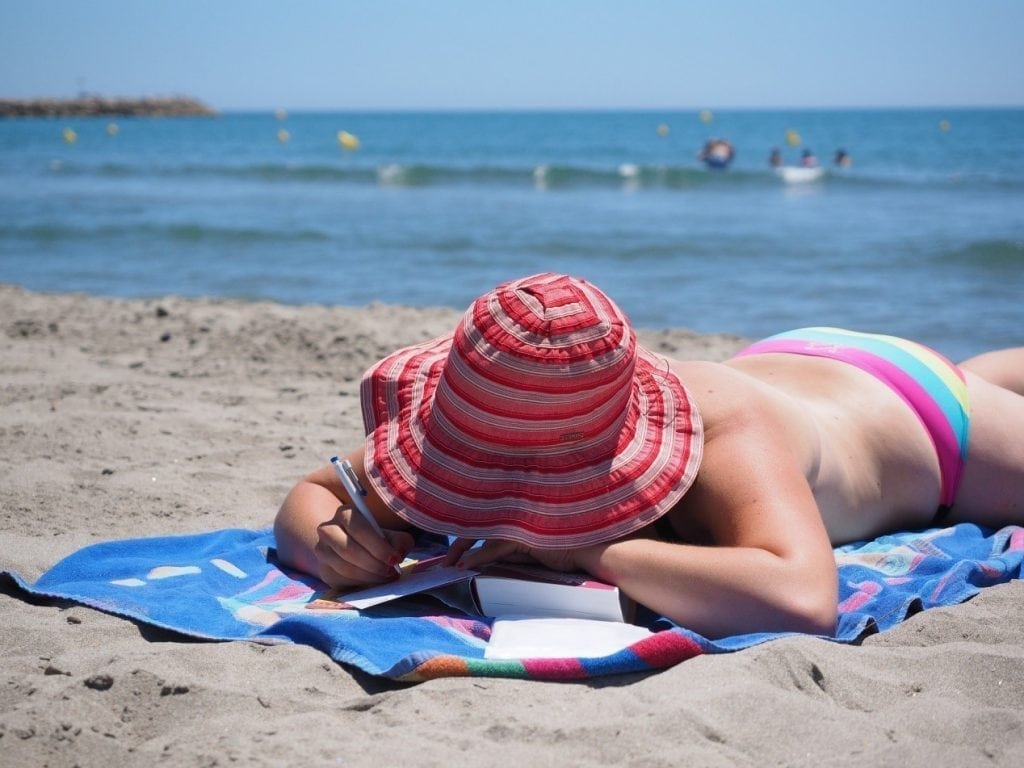In visiting the Dead Sea, one of your goals – besides rubbing yourself in healing black mud, getting pampering spa treatments, and enjoying the beautiful landscapes and seascapes – may be getting a nice tan. Supposedly, getting tanned at the Dead Sea is less risky than at other places: its location, at 430.5 meters below sea level, provides it with an extra atmosphere that filters the ultraviolet rays of the sun. So if you are sensitive to sunburn, this is definitely a good reason to spend your next vacation at the Dead Sea (however, using sunblock is still recommended).
So how does one get a tan safely? Is there a way of doing so without being exposed to dangers such as painful burns, premature aging of the skin, and increasing the chances of getting skin cancer? To help you with these questions, we’ve compiled a list of the best tanning tips, which will teach you how to avoid sunburn and make the best of tanning at the beach or generally tanning outside. So grab a towel, put your sunglasses on, and get ready!
1. You can leave your hat on (you had better do so!)
Ever get sunburned on your scalp? That’s horrible, isn’t it? Not only do the visible parts of your scalp glow in bright red through your hair, but it also feels you were attacked by a swarm of bees – and brushing your hair is a nightmare. A good way to avoid that, as well as protect your face from future wrinkles and your eyes from direct sunlight, is to wear a hat, preferably a wide-brimmed one. Hats are always a fashionable accessory so basically using them to protect yourself from the sun is just an excuse to wear them, isn’t it?
 2. Yes to sunblock
2. Yes to sunblock
Do you want to get tanned or do you want your body to become one huge, violet, throbbing sunburn? Under no circumstances neglect to bring your sunblock with you when you’re planning to spend some hours in direct sunlight, whether you’re trekking, gardening, having a picnic in the park, or going to the beach. Even if you tan easily, sunblock is still a must. Your skin may be less susceptible to burning, but you’re still at risk for wrinkles and skin cancer, unfortunately. Apply the sunblock 30 minutes before getting exposed to the sun so your skin has time to absorb it, and renew it every two hours, or after you’ve come out of the water (even if it’s waterproof). Plus, don’t forget to apply it to areas like your nose, your ears, around your eyes, above your lips, and your feet and toes – many people tend to forget those spots why are characterized by thin skin and therefore more vulnerable.
3. Time is of the essence
Articles that warn you about the harmful effects of exposure to the sun sometimes forget to mention its benefits: it promotes the synthesis of vitamin D in your body, it helps regulate your mood (it is thought to increase the release of serotonin from the brain) and it also helps regulate your circadian rhythm, which is responsible for your sleeping patterns. So tanning can actually be considered a form of sun therapy. However, some hours are better than others for getting a tan: it’s best if you catch yourself some rays of sun before 9:30 AM or after 4:30 PM. In the hours in between, the sun is very strong and the effect of its rays is at most powerful, so that’s a riskier time for getting tanned.
Perfume isn’t recommended
Perfume often contains alcohol, so wearing perfume while tanning can cause you to get weird tan stains in areas where the perfume was applied. If you still want to smell good while you’re in the sun but not end up looking like a Dalmatian, you had better choose an alcohol-free perfume for that occasion.
After-sun care
The sun tends to suck all the moisture out of your skin and can make it dry and flaky even if you didn’t get sunburned. So it’s highly recommended to apply moisturizer to your whole body when you return home after appending several hours in the sun.
So the next time you venture into a sunny beach, don’t forget our tanning tips! This way, tanning at the beach will have only positive consequences – glowing, sun-kissed skin, and a sunny mood to match.

 2. Yes to sunblock
2. Yes to sunblock